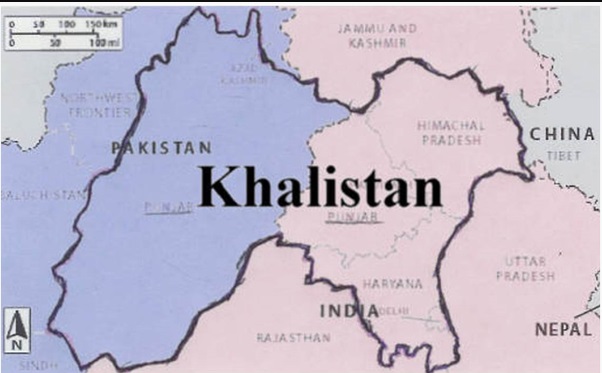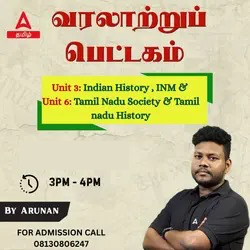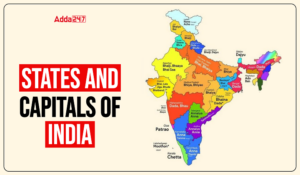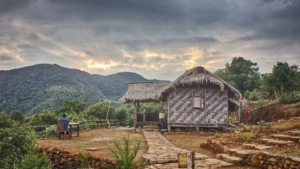Overview of the Khalistan Movement
The Khalistan movement is a separatist group that seeks to establish a sovereign state for Sikhs called Khālistān in the Punjab region. This proposed state would include the territory of Punjab, India, and Punjab, Pakistan, with Lahore as its capital. The movement began after the fall of the British Empire and gained momentum in the 1970s and 1980s with the help of financial and political support from the Sikh diaspora. The insurgency declined in the 1990s due to various reasons, including a strong police crackdown, internal conflicts, and a loss of support from the Sikh population. Although there is some support for the movement in India and the Sikh diaspora, it has not achieved its objective, and protests continue annually to commemorate those killed during Operation Blue Star. The Khalistan movement has, at times, expressed territorial ambitions beyond Punjab, including parts of North India and the western states of India.

Buy Prime Test Series for all Banking, SSC, Insurance & other exams
The Khalistan Movement: Historical Factors and Events that Shaped its Emergence
Pre-Independence
- The Singh Sabha Movement was founded in Amritsar in 1873 with the dual purpose of providing modern western education to the Sikh community and countering the proselytizing activities of various religious groups, such as Christian missionaries, Brahmo Samajists, Arya Samajists, and Muslim maulvis. To achieve the first objective, the Sabha established a network of Khalsa schools throughout Punjab.
- The Akali movement, also known as the Gurudwara Reform Movement, emerged as a result of the Singh Sabha Movement. Its main goal was to free the Sikh gurudwaras from the control of corrupt Udasi mahants.
- These two movements played a crucial role in promoting Sikh nationalism, and through the Khalsa schools, the propagation of Sikh nationalism became widespread. The events that followed India’s independence further strengthened the claim for Khalistan, as the Akali movement continued to advocate for greater autonomy and control over Sikh religious institutions. Overall, these historical movements laid the foundation for the emergence of the Khalistan movement in later years.
Post Independence
- The 1947 partition of India left Sikhs discontented as they lost their traditional lands to Pakistan and experienced a mass exodus of immigrants.
- The Punjabi Suba movement sought the reorganization of Punjab along linguistic lines, resulting in the trifurcation of Punjab into Punjab, Haryana, and Himachal Pradesh.
- The Anandpur Sahib Resolution reignited Sikh passion and sowed the seeds of the Khalistan movement, demanding autonomy for Punjab, identifying regions for a separate state, and seeking the right to frame its constitution.
- Leaders like Jarnail Singh Bhindranwale advocated for a return to orthodox Sikhism, intensifying the Khalistan movement.
- Operation Blue Star, conducted to capture Bhindranwale, resulted in strong anti-India sentiment.
- The assassination of PM Indira Gandhi in 1984 fueled anti-Sikh riots and more sentiment against India.
- Extremist groups like Khalistan Liberation Force, Khalistan Commando Force, and Babbar Khalsa gained prominence and radicalized the youth.
- Pakistan’s ISI tried to foment violence by supporting extremist groups.
- Sikhs for Justice announced Referendum 2020, seeking to hold a non-binding referendum among the global Sikh community for independence from India.
- Pro-Khalistani supporters with Referendum 2020 T-shirts were seen at the World Cup semifinal in Manchester
The Complexities of the Khalistan Movement Across Multiple Nations
The Khalistan movement, which originated in India, has now spread beyond its borders and gained support from various countries. The International Sikh Youth Federation (ISYF) was established in 1984 to create a separate country called Khalistan for the Sikhs of India. While it operates in countries like the UK and Canada, it has also resorted to violent means to polarize people, as exemplified by Jaspal Atwal’s shooting of the Punjab Minister in 2018.
The US-based Sikhs for Justice (SFJ) is another pro-Khalistan group involved in supporting secessionist activities through terrorist activities. In Canada, authorities were caught off-guard by the rapid spread of extremism and the growing support for the movement following Operation Blue Star. Extremists have been responsible for killing thousands of Hindus and even blowing up Air India flights. Canada has become a haven for Khalistanis to operate events in India.
Pakistan, with its long-standing goal of dismembering India through its “Bleed India” strategy, actively supports the Khalistan movement in an attempt to turn Sikhs against India.
Pakistan’s involvement in promoting the Khalistan Movement
A Canadian think tank called the Macdonald-Laurier Institute has released a report titled “Khalistan: A project of Pakistan,” which claims that the secessionist Khalistan movement is a geopolitical project nurtured by Pakistan, posing a threat to the national security of both Indians and Canadians.
According to an Indian Army veteran, Khalistanis demanding a separate homeland in India are receiving support from Pakistani Muslims living in Canada and Britain. The Indian home ministry has identified nine individuals operating from foreign soil, including Pakistan, who are involved in acts of terrorism and designated as terrorists under the Unlawful Activities (Prevention) Act (UAPA).
Pakistan has also been accused of funding organizations involved in drug smuggling and money laundering to strengthen the secessionist movements. Former Pakistan army general Mirza Aslam Beg has publicly urged the government to support the Khalistan movement, and Pakistan is known to support Sikhs for Justice (SFJ) and Referendum 2020.
Intelligence officials have noted that the websites of SFJ share their domain with a Karachi-based website and source content from it. The issue of Sikh radicalism is a concern for India, particularly due to the presence of Khalistan sympathizers in Pakistan who are involved in managing Sikh holy places in the country.
India has previously protested against the inclusion of such individuals in Pakistan’s team for the Kartarpur corridor project.
Current Status of the Khalistan Movement: Where Does It Stand Today?
Despite the relative peace in the state of Punjab, the Khalistan movement still has a presence among some Sikh communities living overseas. The majority of this diaspora is comprised of individuals who have chosen to leave India, and among them are those who vividly remember the turbulent times of the 1980s, thus providing a stronger base of support for the Khalistan cause. The anger and resentment stemming from Operation Blue Star and the desecration of the Golden Temple continue to resonate with some younger generations of Sikhs. However, although many view Bhindranwale as a martyr and remember the 1980s as a dark time, this sentiment has not translated into significant political support for the Khalistan movement.
While there exists a small minority that clings to the past and continues to advocate for Khalistan, their significance is not due to popular support but rather their attempts to maintain political influence by aligning themselves with various political parties, both from the left and the right and one among them is Amritpal Singh.
Amritpal Singh: Who is He?
- The self-proclaimed preacher, who has been the center of controversy, was relatively unknown until the death of actor and activist Deep Sidhu in the previous year.
- Sidhu supported the year-long farmer’s movement in India and founded Waris Punjab De, a group that aimed to protect Sikh rights. The group mobilized farmers and activists, many of whom were Sikh, to oppose Prime Minister Narendra Modi’s attempt to modernize the agricultural sector. The farmers feared that the proposed changes would lower prices.
- Following Sidhu’s death in a car accident in February 2022, Amritpal Singh took over the leadership role, leading marches and delivering impassioned, often provocative, speeches that gained him popularity and a large following. His comments on social issues and the protection of Sikh religious rights against what he calls Hindu nationalist elements led by Modi have resonated with many Sikhs in the state.
- Singh has compared himself to Jarnail Singh Bhindranwale, a prominent figure of the Khalistan movement who was killed by the Indian army in 1984 after they stormed Amritsar’s Golden Temple, the holiest shrine in Sikhism. This was part of an operation ordered by former Prime Minister Indira Gandhi.
- In a recent incident, Amritpal Singh made a statement invoking Bhindranwale’s rhetoric, saying that Home Minister Amit Shah could meet the same fate as Gandhi after Shah spoke out against Khalistan.
- Singh’s father, Tarsem Singh, told reporters this week that the search for his son was a “conspiracy” and that his son was working to fight drug addiction.
You may also read:-
Find More General Studies News Here










 States and Capitals - How Many States in...
States and Capitals - How Many States in...
 Which Indian Village is Known as the Whi...
Which Indian Village is Known as the Whi...
 Monthly Current Affairs PDF – July 2025...
Monthly Current Affairs PDF – July 2025...

